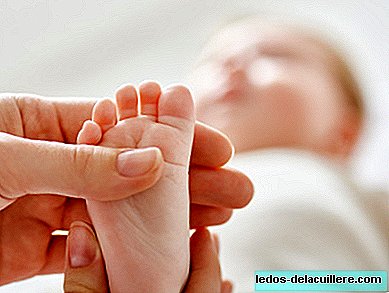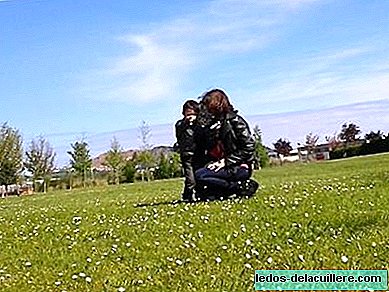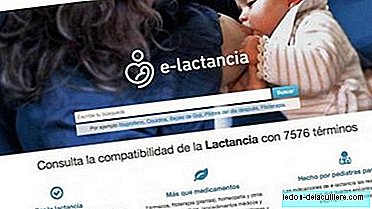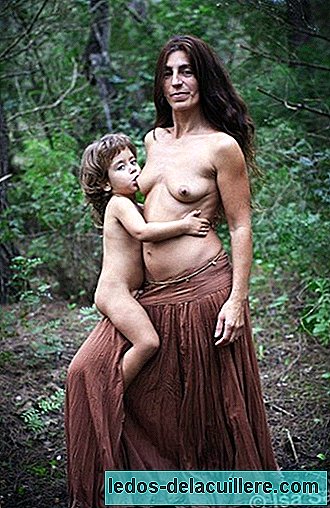
The proper growth of the foot is key in motor development of children and their correct training is very important for prevent problems in the future. Therefore, from a very young age, you have to pay attention to the natural evolution of your feet.
A good way to do this is to provide all necessary stimuli for proper training, as well as choosing a suitable footwear That suits your needs at each stage. Knowing the evolution of the feet and some of their peculiarities is key to knowing how to take care of them, avoiding malformations and postural problems in the future.
The foot, much more than an organ
The foot is an organ that is formed by a complex bone, muscle and ligament gear. In adulthood, the foot consists of 26 bones, 19 muscles and 107 ligaments, which are what support all our weight and allow us to move. Like the rest of the infantile skeleton, the bones of the feet are in constant growth until adolescence, at which time they ossify completely and begin to grow almost negligibly.
Babies are born with flat feet, a passing feature in most casesThe foot of a newborn measures around 7.5 centimeters, is rounded and very elastic. It has, as main feature, a layer of fat that hide the plantar arch. Unlike the normal foot of an adult, who rests on the floor by the tip, heel and outer side, babies they are born with flat feet and support the whole part of the foot on the ground, without appreciating the inner arch. It is a normal physiological phenomenon due to the structure of the foot of the little ones, a situation that occurs until, more or less, 3 or 4 years.

At this stage, the structure of the feet is cartilaginous, the bones are not completely solidified and, for that reason, you have to pay special attention when choosing footwear, while avoiding other issues, such as bad postures and overweight.
The formation of the plantar arch
Gradually and as babies begin to stand up and, above all, walk, the foot is formed and developed. When starting the march and supporting the feet on the ground, they are exercising, their muscles are strengthened and the plantar arch is taking shape.
From that moment and until they acquire all the necessary strength, ease and total balance of the body, they may support their feet poorly because they are looking to sustain themselves without falling. At this stage the plantar fat is still visible and, therefore, the child's foot remains flat.
That does not imply that in the future the little one will have flat feet. It is, in most cases, something temporary on its own foot physiology. During this period, which goes from one year to three years, our observation and periodic check-ups with your pediatrician will tell us if the foot is developing normally.
Stimuli and exercises for the plantar arch
Some practices and games are very beneficial for the little ones as they contribute to the correct training and development of his feet. Thus, for example, it is recommended to perform foot massages of babies from the few weeks of life.
Stimulate your little feet and perform some exercises contributes to its proper development
To do so, both parents and the baby should be relaxed and motivated, so it should be done without hurry and at some time of relaxation. Massages must be delicate. After applying a soft oil, you can hold the foot and slide the fingers of the hand across its floor, from bottom to top and also with circular rhythmic movements. You can also massage your fingers and ankles.

To walk without shoes It is, according to experts, the best way for the plantar arch to develop properly. For this reason, the best thing for children's feet to develop properly is to encourage them to go barefoot at home, a practice that is also recommended during the colder months, in which you should not fear because it results in a cold. Walk on irregular terrain, such as grass or beach sand, it is also very beneficial.
Other habits help form the plantar arch and prevent flat feet, such as Tiptoe, walk to the limp leg or try to grab objects with the toes. In short, any exercise or activity in which the child is barefoot and exercise the foot It will contribute to the correct development of the plantar arch.
The right footwear for foot development
Choose a shoe that suits the needs of each stage It is also key to avoid problems in the development of the feet. Chicco throughout its line of footwear for first steps incorporates a stimulation template, which provides a delicate massage on the sole of the child's foot to help in the natural formation of the plantar arch.
The ideal footwear for the first steps should also provide balance and stability, as well as support and flexibility, so that they have freedom of movement.

It is important that it be of a material breathable and soft and with the rounded tip, to allow the fingers to move freely. In addition, you should have a wide mouth and a simple easy opening and closing, something that will also promote the autonomy of children. Chicco shoes respect the physiology of the baby's foot thanks, as we have said, to the Chicco Natural Insole.
For the foot to grow correctly, you have to take care of it from birth and provide you with the necessary freedom of movement, safety and comfort. In this way, we will avoid many of the problems They occur in the feet in adulthood, some of which are derived from early childhood.
In Chicco Moments
Two babies at home, and now how do we organize?
My baby cries as soon as he gets into the car, what do I do?
Carrycot or stroller: what if we stay with both?
Photos | iStock: Choreograph / Fedinchik / FamVeld












